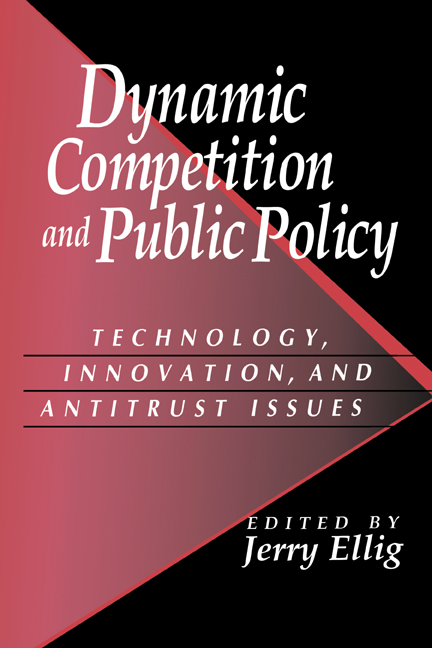Dynamic Competition and Public Policy
During the 1990s, U.S. antitrust policy began to take greater account of economic theories that emphasize the critical role of innovation and change in the competitive process. Several high-profile antitrust cases have focused on dynamic innovation issues as much as or more than static economic efficiency. But does dynamic competition furnish a new rationale for activist antitrust, or a new reason for government to leave markets alone? In this volume, a dozen leading scholars with extensive antitrust experience explore this question in the context of the Microsoft case, merger policy, and intellectual property law.
- World-class contributors assess trade-offs between innovation and antitrust in large-scale industrial activity (D. Rubinfeld, F. Fisher, S. Liebowitz, S. Margolis, R. Langlois)
- Most up-to-date, comprehensive assessment of Microsoft case and related issues
- Introduction and conclusion set forth the issues in valuable theoretical and applied contexts
Reviews & endorsements
"This is a fascinating volume on an extremely important topic." CHOICE Dec 2001
Product details
April 2001Hardback
9780521782500
288 pages
238 × 162 × 22 mm
0.535kg
13 b/w illus. 7 tables
Available
Table of Contents
- Introduction
- 1. A taxonomy of dynamic competition theories Jerry Ellig and Dan Lin
- 2. Innovation and antitrust enforcement Daniel Rubinfeld and John Hoven
- 3. Competence explanations of economic profits: some policy implications Jay B. Barney
- 4. New Incidia for competition policy and market analysis in high-technology industries Christopher Pleatsikas and David Teece
- 5. Technological standards, innovation, and the essential facility doctrine Richard N. Langlois
- 6. Innovation and monopoly leveraging Franklin M. Fisher
- 7. Competition in network industries: the Microsoft case Stan Liebowitz
- 8. Intellectual property and limitations on contract: antitrust, preemption, and the first sale doctrine Michelle M. Burtis and Bruce H. Kobayashi
- Conclusion.






